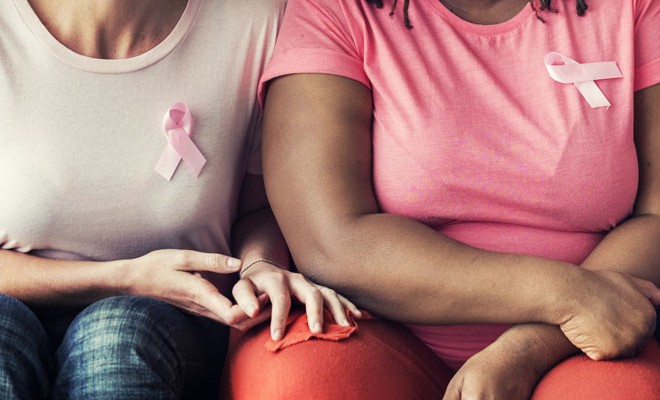
Breast cancer is the most common type of cancer and the second leading cause of cancer deaths among women. So with October being Breast Cancer Awareness Month, we’re highlighting some ways you can detect breast cancer early on.
Perform monthly self-exams
Self-exams allow you to notice differences in your breast early on and should be performed once a month. The most common identifier of breast cancer is a lump or a mass in the breast. Other signs to look for include swelling of all or part of the breast, skin irritation or dimpling, breast or nipple pain, nipple retraction (or turning inward), redness, scaliness or thickening of the nipple, and nipple discharge (other than breast milk). If you notice any of these signs or anything unusual, be sure to contact your healthcare provider immediately.
Get regular doctor screenings
A clinical breast exam is a screening performed by a licensed doctor or nurse who’s trained to detect different types of abnormalities and warning signs. This in-clinic exam can easily be performed by a family physician or gynecologist at your annual exam and is extremely helpful in spotting red flags. He or she will check for any lumps or abnormalities in your entire breast, underarm, and collarbone area.
Request an annual mammogram
Mammograms, an X-ray that produces images of the breast tissue, are a great tool in detecting the early stages of breast cancer. They often show breast lumps before they can be felt, and they also help find tiny clusters of calcium called microcalcification that can be caused by cancer. If the mammogram shows any abnormalities, the doctor will then order more tests, such as an MRI or ultrasound, to get a more detailed image of the breast. Women over the age of 40 should have mammograms every one to two years, and even women under the age of 40 without any symptoms or risk should schedule regular mammograms to be safe.
Practice a healthy lifestyle
While there isn’t a cure nor a guaranteed prevention tactic for cancer, you can practice healthy habits to reduce the risks. The National Breast Cancer Foundation recommends maintaining a healthy weight, exercising regularly, maintaining a diet with lots of fruits and vegetables, not smoking, and limiting alcohol consumption.
xx, The FabFitFun Team





